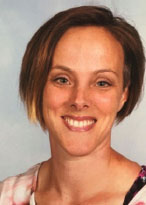Presenters
Presentations & Workshops
Lucy Angell and Jane Guthrie
Working with Effort: Moods, movement and meaning
…movement is a psycho-physical process, an outward expression of inner intent
These words from the writing of Groff (1995) support Laban Movement Analysis (LMA) as a system that combines the psychological and physical aspects of movement. Within this system, the inner impulses that arise from feeling or psychological states manifest in recognisable physical qualities that Laban termed Efforts. This language of the Efforts is further broken down into singular Elements, that can be combined in various configurations called States and Drives.
This workshop will involve an orientation and exploration into the language and key qualities of the Effort Elements and States. An enquiring approach will guide you through each embodied exploration: you will be invited to respond to the Effort Elements as an impetus for movement or speech. 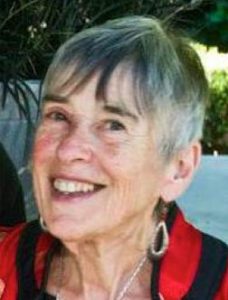 By allowing thoughts or feelings to emerge only from that stimulus, we may uncover, and work with, what we find to be the psychological parallels of particular Effort combinations.
By allowing thoughts or feelings to emerge only from that stimulus, we may uncover, and work with, what we find to be the psychological parallels of particular Effort combinations.
This process will be facilitated through individual and small group work and will offer participants time for sharing and reflection on their experiences of embodying Effort, and exploring the connection of inner and outer through an LMA lens.
Bio: Lucy Angell
Bio: Jane Guthrie
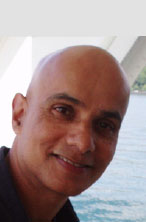 Ranjit Bhagwandas
Ranjit Bhagwandas
Embodied Presence and Dimensions and Planes of Movement
Continuum between Inner Presence Relationship and Actions
My own experience of moving from the East to the West has motivated a lifelong interest in integrating Western and Eastern based philosophy and practices. As part of this aspiration, I have developed a practice model of Embodied Presence/Mindfulness that draws on Bartenieff’s three dimensions and planes of movement. The model allows us to deconstruct and explore the movement elements of Embodied Presence within each of these dimensions: Vertical, Horizontal and Sagittal, corresponding to the dimensions of Self, Relationship and Action.
This practice seeks to bring greater consciousness to how we align our inner presence in our relationships and our actions as a way to shape our relationships and increase agility in our decisions and actions. Broadly, this work explores how we foster our intuitive ability to use awareness to increase the level of moment-by-moment responsiveness and agility. This ability is at the core of much of our work in creative exploration, therapy as well as in broader work and life.
This short workshop will provide a brief overview of the model and include an experiential movement exploration within each dimension of this model.
Bio: Ranjit Bhagwandas
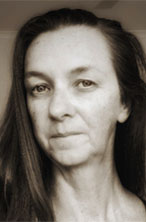 Narelle Carter-Quinlan and Jean Tally
Narelle Carter-Quinlan and Jean Tally
Breath and Fluid in the body and land [workshop]
A Workshop: An integrated approach to moving and sounding through image and embodied anatomy-ecology
Your body is part of the living, breathing land – the greater ecology of Place. Not separate, you are part of Wholeness itself. When we embody, that is, directly, consciously and viscerally encounter, an aspect of the landscape, we find its echo within our own interior. As we take the various aspects of the land into our soma, from bone-rock or through the wash of our own internal waterways, we find the resonance of our own terrain as felt, known, poetic space. We become an embodied ecology. When we move, when we dance, from this place, we are healed. Returned to our original vibrance and flow, to our cohesive sense of self.
 In this workshop, we will use photographic images as stimulus, together with anatomical and ecological imagery and metaphor. Through the practices of vocal sounding, breath, touch and movement improvisation, we will embody, anchor and express our sensations as explorations of the kinaesthetic, emotional and intuitive landscapes of the respiratory and fluid systems.
In this workshop, we will use photographic images as stimulus, together with anatomical and ecological imagery and metaphor. Through the practices of vocal sounding, breath, touch and movement improvisation, we will embody, anchor and express our sensations as explorations of the kinaesthetic, emotional and intuitive landscapes of the respiratory and fluid systems.
You can expect to come away with new stimuli and fresh pathways of inquiry exploring the relationship of the body and its natural environment.
Jean and Narelle have practiced sounding and moving together for years. Their teaching styles are complementary, sharing a breadth and a wealth of knowledge, while finding ways to articulate their unique skills to invite the extraordinary.
Bio: Narelle Carter-Quinlan
Bio: Jean Tally
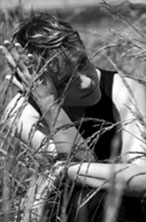 Debora di Centa
Debora di Centa
The Scaffolding Workshop [workshop]
This workshop is intended as an experiential process through which to deepen and explore aspects of Contact Improvisation through a Laban Movement Analysis perspective (Choreological Studies) and integrated by a somatic approach. The process uses a score to allow participants to explore the different phases of embodied movement relationships.
Starting from the social concept of individuality and mutual support, The Scaffolding score seeks to explore a progressive journey where the participants will be divided into groups, where one person at the time will be focused upon and supported physically by the rest through their dance. This is explored by setting up a structure where the individual and the group as a whole are guided through different stages (the score).
Invitation to the Dance: All participants are invited to take part in a journey to enrich their creativity and embodiment with a clear reference to the social component present in this movement choir. This work has potential to become a live performance; therefore through the workshop we will encounter the triadic perspective of creating, performing and appreciating. Openness, attention, intention, curiosity and respect are key elements to this process.
Contents: This workshop is approached through Choreological Studies: the study of the logics of human movement applied in dance – Laban and beyond (Trinity Laban London). The Process considers and presents a methodology, which combines movement’s theory and practice. The Scaffolding is part of Debora di Centa’s research on human movement and cognition applied in dance and performance.
In order to attend the workshop a willingness to experience aspects of Contact Improvisation Dance Form is required. Participants will be invited to experience weight sharing, bodily contact, being lifted, upside-down and improvisation.
All levels of experience are welcome (beginner to professional expert).
People with special needs might be accompanied by their carers (who will have to be involved within the activities).
Bio: Debora di Centa
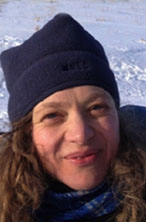 Ineke de Graaf and Camilla Maling
Ineke de Graaf and Camilla Maling
Being Human in Public – LIPS [workshop]
What is it to be really human in public? Or is this only reserved for our private lives? Do we even want to be fully seen? And how do factors like class, culture, age, gender and religion affect this? Join LIPS and explore the moving life of a public space, the space of public life and the life in you as you inhabit the spaces we deem public.
LIPS: Live in Public Spaces – taking-on being human in public! A site-specific improvisation duo and social research initiative by The WonderLab Project* – Melbourne based dance artists Camilla Maling and Ineke de Graaf. LIPS present their work and research over the past year and invite you to join them in shaking up how you might normally behave in public to discover the humanity that’s there.
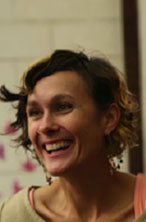 *The WonderLab Project (TWLP) – an enduring artistic duo mapping the moving thinking human, has been a key player in Camilla Maling and Ineke de Graaf’s art practice and process for the past five years. TWLP has produced various community-based works, events and access points to engage people in a conversation about how moving is fundamental to living, the marvel of the human being, the curiousness of how we behave and move, and the dance of this relationship. TWLPs latest works, LIPS – Live In Public Space and HumanHuman – A Podcast, are juicy channels to further this research.
*The WonderLab Project (TWLP) – an enduring artistic duo mapping the moving thinking human, has been a key player in Camilla Maling and Ineke de Graaf’s art practice and process for the past five years. TWLP has produced various community-based works, events and access points to engage people in a conversation about how moving is fundamental to living, the marvel of the human being, the curiousness of how we behave and move, and the dance of this relationship. TWLPs latest works, LIPS – Live In Public Space and HumanHuman – A Podcast, are juicy channels to further this research.
As improvisation performers, Camilla & Ineke’s nuanced attention to themselves and their environment reframes and offers possibilities to those who are watching to reconfigure space and reconsider their own experience and expression. Camilla and Ineke approach LIPS through the lens of their professional work as movement educators, as well as their backgrounds in journalism and anthropology.
Bio: Ineke de Graaf
Bio:Camilla Maling
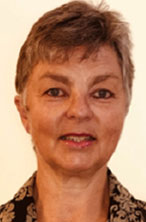 Kim Dunphy
Kim Dunphy
Embodiment as an outcome of dance movement therapy: how can we assess change that occurs through the therapeutic process? [presentation]
In dance movement therapy, embodiment is valued as both an important process and a desired outcome for clients. That is, dance movement therapists would consider clients’ access to deeper and richer sense of embodiment one important success indicator of therapy. Yet, practical methods for assessing client’s experience of embodiment are as yet underdeveloped. There are, as yet, no agreed measures for understanding and reporting clients’ changed experiences of embodiment, nor well-developed tools to gather data against such measures. This presentation invites a discussion on possibilities for assessment of embodiment in dance movement therapy. It introduces the Framework for Dance Movement Assessment (Dunphy & Mullane, 2018) devised to enable DM therapists to utilise shared measures and understandings of client progress. Participants will consider the appropriateness of measures currently contained within the Framework for their usefulness as indicators of embodiment. The session will include an experiential component, with participants exploring measures discussed in the session for their potential usefulness in individuals’ practice and the DMT profession as a whole.
Bio: Kim Dunphy
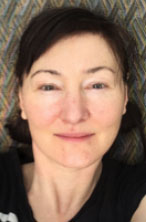 Jaye Hayes
Jaye Hayes
Embodying ecologies of rest: Restorative Yoga and Somatic Meditation
‘Nothing can be forced, receptivity is everything’ – BKS Iyengar
‘Support precedes change’ – Bonnie Bainbridge Cohen
Experience Jaye’s signature combination of Restorative Yoga and Somatic Meditation as she guides you to explore the embodied ecologies of deep rest.
This workshop invites you to sink beneath the skin and embark on a journey of involution. You will be guided to explore the interior landscape of the body, to inhabit this somatic terrain and to enter into a state of deep listening. Residing within encourages a merging of body and mind that activates cellular consciousness and awakens embodied intelligence.
RESTORATIVE YOGA is a gentle yet transformative yoga practice dedicated to the art of rest. It supports you to soften into the poses, reconnect with the earth and receive the flow of breath.
SOMATIC MEDITATION (in stillness or in movement), is a practice of direct sensory engagement with the anatomical systems of the body. In Restorative Yoga, it elicits the key somatic shifts that allow rest to become truly restorative.
Through sound and silence, rest and support, stillness and movement, Jaye will guide you towards a deep state of embodied being that is the basis for sustainable action.
All bodies are welcome to participate. Please bring a blanket & a cushion.
Bio: Jaye Hayes
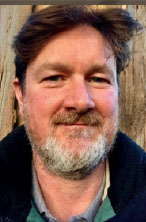 Richmond Heath
Richmond Heath
Movement, embodiment and flow through Neurogenic Tremors – the Oldest Medicine on Earth [presentation]
Spontaneous ‘neurogenic’ movement has been described as ‘the oldest medicine on earth’ and deliberately used by traditional cultures for health, wellbeing & spirituality for thousands of years. More recently, the deliberate use of therapeutic tremors is also being shown to play an important role in balancing the autonomic nervous system, releasing muscular tension, deepening embodiment, reducing pain, improving sleep, assisting with recovery, preventing injury and optimising natural movement patterns. By reframing the role and purpose of this natural re-organising movement reflex from a trauma-informed model of the body, TRE provides a simple but profound self-care technique that can be deliberately used in a safe & self-regulated way to support all kinds of movement & ‘re-embodiment’ practices and enhance the effects of other treatment modalities. As reflex movements have been shown to create greater contractile force than those achievable by conscious effort alone, and the reciprocal nature of the movements have a calming effect that increases coherence in brain waves and Heart Rate Variability, TRE offers one of the simplest yet most profound embodied practice of flow states to inspire creativity, free-up personal expression and optimise peak performance in all areas of life.
Bio: Richmond Heath
 Heather Hill
Heather Hill
The Art of Embodiment: Bringing it all together (closing session)
Following some brief comments by panellists, there will be opportunity for small group discussion/reflection and harvesting of ideas from the whole group on what we have learnt about embodiment.
Bio: Heather Hill
Martin Hughes and Catherine Magill
Dancing the Shared Moment – An introduction to embodiment through Contact Improvisation [workshop]
Contact Improvisation (CI) is an “off centre” duet dance form, which brings the dancer into an ever-changing relationship to self and other, in a co-created response to gravity, weight and momentum. The form asks the mind to be actively shifting awareness, while the body recognises and responds to the physical puzzle emerging relationally in each moment. The unavoidable and desired interaction with gravity and weight, however subtle or gross, asks the body and mind to expand awareness and perception. To keep the”rolling point” i.e. the dance, in play and alive, the mind needs to be fluid and flexible so the body is free to respond. When in relationship to gravity the thinking (instinctive) body is faster than the thinking (designing) mind. The mind must stay in a moving state of awareness rather than fixating on a plan or outcome (premeditated choreography), to allow the body to play in the unfolding dance. The dance is free to form itself in the moment while the dancer is free to enjoy the ride.
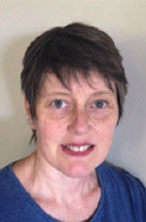 The “point of contact” is a place of inter-subjective dialogue, where each dancer offers and receives the impulses and imaginings of the shared body. The improvisation component of the form allows each body to make its own choices, allowing and accepting the individual’s physical capabilities and possibilities. This unique combination allows CI to be experienced by diverse and varied bodies, regardless of age, experience or mobility. CI can be highly athletic or delicately sensitive and everything in between.
The “point of contact” is a place of inter-subjective dialogue, where each dancer offers and receives the impulses and imaginings of the shared body. The improvisation component of the form allows each body to make its own choices, allowing and accepting the individual’s physical capabilities and possibilities. This unique combination allows CI to be experienced by diverse and varied bodies, regardless of age, experience or mobility. CI can be highly athletic or delicately sensitive and everything in between.
In this workshop we will share and explore the fundamental principles of Contact Improvisation. We will start from the premise of “dancing with the body we’ve got”. Through a series of simple and accessible physical CI activities we will invite participants to delve into a broader sense of embodiment through explorations of connection to another, relating to gravity and sharing weight. Through relationship and connection to another body, dancers will explore: whole body “listening” and sensing, leaning into gravity, leaning into another (the feedback loop of awareness), resisting and yielding, sensing tone, sensing structure, accepting and offering support, fuelling and following the “rolling point”, leading and following or just allowing.
Bio: Martin Hughes
Bio: Catherine Magill
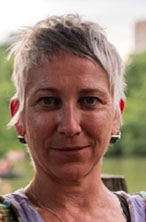 Kate Hunter
Kate Hunter
Body of Words: Embodying language in live performance [presentation]
This paper investigates choreographed gesture in live performance as a provocation for new considerations of embodied language. To examine this idea, I draw on the complex gestural choreography employed in my 2017 theatre work ‘Earshot’.
‘Earshot’ is a live performance piece for two actors, one electroacoustic musician, and 250 metres of greywater hose. Built from eavesdropped and overheard conversations gathered from the general public, ‘Earshot’ employs live, pre-recorded and projected text, and an ingenious set design of speaking tubes made of PVC plastic pipe and funnels that snake through stage and audience. Using speech recognition software similar to the interfaces we use every day on our iPhone, like Siri or Dragon Dictation, and underpinned by a specific gestural language which is in constant and fluid relationship with the text(s), ‘Earshot’ offers a fly-on-the-wall insight into the lives of others: personal, epic, comic and sometimes devastating.
‘Earshot’ is one performance-maker’s attempt to create a felt confluence of body and word and sound and cognition. This paper examines the possibilities that arise when intersecting movement with, around, and beyond spoken word. It brings into focus the potency of seemingly incremental shifts in digital technologies which have profoundly influenced the way we are in the world. How might this affect the ways we form and manifest stories?
Bio: Kate Hunter
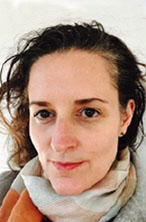 Myfanwy Hunter
Myfanwy Hunter
Articulating the Solo-Social Continuum: Exploring nuance in music-dance collaboration [workshop]
In this workshop, participants will be introduced to the Solo-Social Continuum as a means of locating, articulating, and extending dancer-musician dialogue and interaction. The Solo-Social Continuum provides a clear and open framework for participants to unpack the terrain that exists between solo, duo, and social forms of embodiment and engagement. The Continuum offers a means for developing in-depth interaction and shared language in dancer-musician collaborations. This workshop will also focus dancer-dancer and musician-musician forms of engagement.
The Solo-Social Continuum is informed by over twenty years collaboration with Butoh, BodyMind Centering, Body Weather, and Contemporary dance artists. The Continuum will be presented, fleshed out, explored through visual imagery, literature, questions, discussion, movement, sound, and provocation. Participants will explore the Solo-Social Continuum on their own, in one-on-one interaction, trios, and in larger group formations. The term Solo-Social Continuum is born out of 4 years intensive research into one aspect of the Continuum: the Assisted Solo. The Assisted Solo will be discussed and explored in detail during the workshop to help articulate the transition from solo to social forms of interaction.
Participants will hopefully arrive at an embodied understanding of the Solo-Social Continuum, which will inform and strengthen their own practice. No previous or current dance or music experience is required to benefit from the workshop. Participants will be given practical tools and resources to continue exploring the Solo-Social Continuum in their own movement and music-making practice, as well as related fields of inquiry such as interpersonal relationships, education, and mindfulness practices.
Bio: Myfanwy Hunter
Vangelis Legakis
Thinking Hearts: Feeling Minds emotional / energy bodies [presentation]
Do somatic practices encompass energy work?
In diverse somatic practices and practices focusing on embodiment, we find a profound focus on the use and inter-relationship of the body and mind. In yoga and chi gong traditions there is a further approach to what is called emotional and energy bodies. This presentation will introduce the theory behind the emotional and energy bodies and how this feeds in and feeds back to the body and mind inter-relationship. The presentation will refer to the five elements from the chi gong tradition, and their interconnectedness with emotions as well as will refer to the Book “Heart’s Code: Tapping the Wisdom and Power of Our Heart Energy” by Paul Pearsall.
The title of this presentation is inspired by the proposed title Thinking bodies: Moving Minds, by taking into account what chi gong tradition focuses on – to think with the heart and feel with the mind.
In A Mind’s Eye: Embodied Unity [workshop]
An integration of Dance Improvisation with Chi Gong for enhancing and promoting embodiment, somatosensory perception and energy flow.
This workshop will draw on some specific practices from the Embodied Unity philosophy, which is an integration of diverse styles of Dance, Chi Gong, Yoga and healing modalities for enhancing and promoting performance, dance, healing and a state of homeostasis to the self and community. Legakis will focus the workshop on a few simple Contact Improvisation exercises that he incorporates for relationship balance. We will thereafter apply this practice to a group context to create a unified and coherent group practice which can allow us to feel a state of interconnectedness and oneness. A focus will also be given to the dance practice Passing Through as a community practice and how this can facilitate a harmonious relationship and energy flow within the group. Legakis will introduce Improvisation methodologies inspired by different established pedagogues in dance.
Bio: Vangela Legakis
 Christos Linou
Christos Linou
Naked Peel: Twelve Hours Later, shedding intoxications through durational embodiment [presentation]
This practice led research explored the nature of durational performances using a heuristic, self-as-artist approach, with a relationship to the spectator as a central consideration. It investigated multiple states of embodiment in the extended performance and explored how entrancement, gazing, drifting and inattentional blindness could be part of the affective experience. It focused on the corporeal as a site for understanding pre-coded body information, trauma, and one’s immanent desires. By using my own experience, I investigated the historical accumulation of coded information through the body’s memory, dreams and lived experiences. I located these as an embodied cultural mythos, the presence of which lies within the body. The solo performer was used as a conduit for somatic methodologies to collect materials based on chance discoveries for solo investigations, for collaboration, and for live durational performances.
Performances of six, eight and twelve hours were drawn from the research, specifically crafted for an art gallery space, an adult nightclub a theatre space and a public festival, to explore the differences in engaging self and audience over extended periods of time.
The arguments are based on the premise that a durational performance moves away from traditional time restraints and allows ‘time’ itself to be the actual experience. Theorist Elizabeth Behnke influenced discussions in this inquiry, with findings from psychologist Linda Holler and the references to one’s physical sensations influenced by neurologist Antonio Damasio.
The questions asked are: What are the different qualities of durational art practice? And what are the differences between being embodied by something, or being captive to something?
Bio: Christos Linou
 Camilla Maling and Angela Clarke
Camilla Maling and Angela Clarke
The Live Particle Way – Somatics and Creativity [workshop]
Live Particle: Generating live knowing – the conditions to thrive
www.liveparticle.com.au
Imagine learning as a live performative event… explore your poly-intelligence, attune to experience differently, inhabit different states, map your learning through the visceral, indulge creative impulses and perhaps even visit remarkable embodied dimensions.
In this workshop, artist/educators Maling and Clarke explore the synergies between their work. Maling’s Adventures in the Field – a process of experiencing & mapping embodied intelligence – meets Clarke’s PhD Wild Life: The lived experience of artistic creativity, and a new artistic enterprise ‘Live Particle’ has emerged.
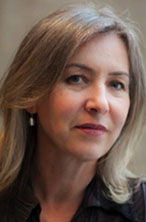 Live Particle provides embodied education and resources for learning agility and personal sustainability to the tertiary sector & beyond. The Live Particle Way is an experiential multi-sensory learning practice informed by, and designed to coordinate with, the human organism. This quite literally is an organic process which develops live. Live Particle asks – what is it to consciously & actively learn as an integrated and fundamentally creative organism and how can humans fully cultivate the capacity to do so?
Live Particle provides embodied education and resources for learning agility and personal sustainability to the tertiary sector & beyond. The Live Particle Way is an experiential multi-sensory learning practice informed by, and designed to coordinate with, the human organism. This quite literally is an organic process which develops live. Live Particle asks – what is it to consciously & actively learn as an integrated and fundamentally creative organism and how can humans fully cultivate the capacity to do so?
By generating ‘live knowing’ through live performative events, learning resources and artisanship, Live Particle is geared for social change – creatively resourcing humans and fostering the conditions to thrive.
Bio: Camilla Maling
Bio: Angela Clarke
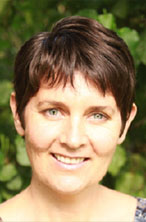 Jan McConnell
Jan McConnell
Te Kanikani – The Dance [workshop]
A dance movement workshop exploring themes of cultural embodiment
Whakawhanaungatanga is a word from the Maori language that broadly translates to a kinship, a sense of familial connection through shared experience, a sense of belonging that serves to strengthen each member of the kin group.
Working as a DMT in Northland New Zealand with a high Maori population, an understanding of culturally attuned frameworks has been important for my practice. Te Whare Tapa Wha (Durie, 1998) is a health model developed for Maori by Maori (Manna, 2002), yet it holds the universal themes of verbal and non-verbal expression, holism and interconnection that parallel many of the underpinnings of creative-expressive therapy. Here is another view of what embodiment may mean. Yet I am challenged. Does my understanding of embodiment really cross cultural divides? How much does culture and language influence my belief of what embodied living and healing may look like? Can I really understand another’s culture without a felt-sense and movement of where it lives in my own body? Can DMT be a key component to cultural understanding and learning? Can this component influence our models of practice working at places where cultural diversity and human universality meet?
This workshop invites you to explore these questions with me, both for yourself and as a collective dance therapy and somatic community. Using a framework of Te Whare Tapa Wha and the Halprin method, we will dance these questions and connections and allow our own cultural references and understandings to emerge within them. This workshop will be especially valuable to those working in culturally diverse settings.
References:
Durie, M. (1998). Whaiora: Maori Health Development. (2nd ed). Auckland: Oxford University Press.
Manna, L. (2002). Biculturalism in practice, ‘Te Pounamu’: integration of a Maori model with traditional clinical assessment processes. Retrieved 20 October, 2009, from
Bio: Jan McConnell
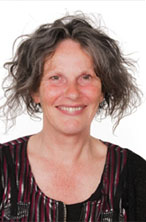 Sue Mullane
Sue Mullane
Experiencing embodied research methodology: Paying attention by fleshier means to the fleshier aspects of knowing and understanding [workshop]
Proponents of embodiment refute the mind/ body binary by proposing an integrated physical, mental and emotional being that dwells dynamically in its environment (Johnson, 2007). Dance academic and philosopher Sheets-Johnstone (1998) suggests that movement is a unique enabler of embodiment. She offers that through movement, attention can be paid to “tactile-kinaesthetic ways of knowing” and making sense of experience (p. 137) which she encapsulates in the term “moving intelligence” (p. 489).
Research methodologies sensitive to the notion of embodiment fittingly bring the body into the centre of inquiry where emphasis is given to knowledge gleaned by the body, about the body. But whose body is included in these processes? By what means is knowledge generated and whose knowledge is it? What kind of knowledge arises from this approach and how may this be made known to those interested?
This workshop offers participants a tactile-kinaesthetic exploration of an embodied methodological approach to research. Working in small groups, participants will devise ways of bringing their collective moving intelligence to an assigned “research topic”, that incorporates engagement of the research participants’ bodies as well as their own bodies as researchers. Consideration will be given to the kind of awareness that might arise from these processes and for whom; how as researchers they may best present this awareness to others; and what requirements seem necessary for those interested in undertaking this kind of methodological approach. Some examples of embodied methodology practice will illustrate the experiential, taken from the presenter’s PhD research (Deakin University) inquiring into shared improvised movement practice for personal and social knowing.
Bio: Sue Mullane
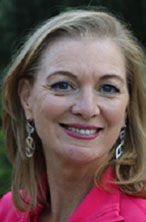 Tracey Nicholson
Tracey Nicholson
How do we subtly incorporate Somatics and Laban Movement Analysis into Movement Sessions with Clients – Arriving at the Essence of Movement Therapy? [workshop and presentation]
As practitioners we must ask ourselves – what is it that compels clients to return and how can we get new clients to open up to embodiment? How can we carefully and cleverly incorporate and combine aspects of DanceMovement Therapy, Laban Movement Analysis and Developmental Movement into our sessions with clients? Can we use these tools as a framework for assisting in the collection of non-verbal information and for communicating observation of movement and emotion subtly to improve health outcomes?
The challenging aspect for those of us working clinically is how to communicate what it is that we actually do through our embodied movement work. This presentation will take participants through an experiential that is both accessible to the general public and one that can be incorporated into a range of movement settings. The aim is to provide potential for clients to experience a pyscho-dynamic therapeutic outcome by bringing Somatics and Movement Therapy into sessions with clients who don’t necessarily arrive for their appointment seeking these modalities.
Bio: Tracey Nicholson
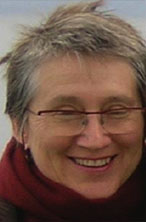 Mary Rose Nicol
Mary Rose Nicol
Dancing the Dream: Dreaming the Dance [presentation]
A reflection on the meeting of Dance Movement Therapy and Jungian Analysis in practice.
As a Jungian Analyst much of my work is listening to the unconscious as revealed in the dreams of clients. As a DMT my curiosity is always sparked when people bring dreams of dance. Weaving together awareness of psyche and matter, body and soul, the rational and irrational, this presentation will look at some different ways Dance is seen in dreams – exploring what this might mean for the individual dreamers, and as an archetypal image more generally. We will also reflect on the way in which giving dream images form through movement can bring deep connection to the symbolic language of psyche or soul.
Bio: Mary Rose Nicol
 Katrina Rank
Katrina Rank
Returning to Dance [workshop]
Embodiment suggests a certain kind of permanency, an encoding that stays, an etching or groove. It aids memory by supplying automatic functions built by individuals over time as they learn to reach, grasp, balance, transfer weight and complete simple tasks. It helps us refine and layer our movements, add complexity or multitask.
This 90-minute, gentle, movement-based workshop explores the returning, mature aged dancer’s reconciliation of early embodied experience with a body altered by time and experience.
Through conversation and short movement tasks or activities we’ll:
1. Consider our present bodies and explore expectations
2. Consider what dancers do to satisfy their hunger for movement once they stop their dance engagement
3. What they might want from their dance participation now
We will explore:
4. How altered physicality affects the reawakening of embodied experience and how time affects the condition of embodied experience
5. What approaches a dance facilitator might use to ensure positive engagement with dance on many levels: as an art form, as an expression of self, community or culture, and as a physical and intellectual challenge.
6. How we might foster an honoring of who we are now without excessive reference to the past
7. The significance of touch when working with older populations.
Website Katrina Rank: katrina-rank.squarespace.com
My Body is an Etching youtu.be/nkxyFOEdyWU
Blog: finelinescreativebody.wordpress.com
Bio: Katrina Rank
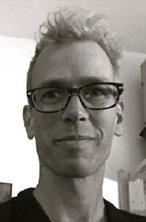 Paul Roberts
Paul Roberts
Somatic Attentiveness and Improvisation [presentation]
A Theoretical Presentation and Case Study Presentation
I am an artist researcher, dancer, and maker of live performance. This theoretical presentation is centred around a term which emerged during my PhD research into embodiment and the making of solo performances of improvised dance choreography – somatic attentiveness.
Somatic attentiveness refers to being actively engaged in each moment to the experience of being a mindful body. It refers to qualitative experiences of one’s own specific body-hood, including experiences of movement, kinaesthesia, and experiences of the associated or independent sensations, and or affects.
Since 2005 my practice-led research has been centred around ways and means into embodiment, as the basis for making live performances of improvised contemporary dance. With my ongoing artistic research, I continue to explore conceptualisations that foster productive links between my dance performance making and my body’s specific and changing conditions. Somatic attentiveness links to values such as human development, and social responsibility. These links enable me to call into question the socio-political agency of such performance making as my own. I explore the notion that the consistent application of somatic attentiveness provides a sense of continuity between experiences of movement associated with personal, political, cultural, social, and academic actions. A theme therefore of this presentation is that the personal, the social, the cultural, the political, and the academic are enmeshed. No one precedes the other.
This presentation will detail my understanding of the term somatic attentiveness; it will also describe how actively employing somatic attentiveness in a performance making context has affected my understanding of what it means to genuinely be able to be socially responsible.
Phenomenology as a philosophical approach positions lived experience, and the body, centrally. My research has been significantly supported and furthered through exposure to materials from this field. The work of philosophers such as Maurice Merleau-Ponty, Maxine Sheets-Johnstone, Philipa Rothfield, Elizabeth Behnke and others in response to Husserlian Phenomenology has informed my work. Perspectives which have guided my inquiries have also come from autoethnography, dance theory and performance theory, through the work of theorists and philosophers including Carolyn Ellis, Bojana Cvejić, Danielle Goldman, Susan Leigh Foster and Ann Cooper Albright.
Bio: Paul Roberts
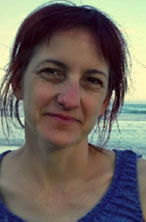 Kim Sargent-Wishart
Kim Sargent-Wishart
Embodying Vision: BMCsm and contemplative arts approaches to the art of seeing [workshop]
In this experiential workshop, participants will be introduced to embodied anatomy and physiology of the eyes, along with contemplative arts practices designed to awaken the sense of seeing. Using a Body-Mind Centering® approach and methodology of visualization, somatization, and embodiment, participants will explore the eye muscles, fluids, fatty tissue support, the process of visual image reception, and blind spots. This somatic exploration will then extend into exercises from contemplative arts practices – inspired primarily from Shambhala Arts and contemplative photography traditions – to invite fresh experiences of perceiving the visual field. These practices can support the development of creativity and awareness through seeing what is usually overlooked – discovering patterns, ‘found’ compositions and everyday beauty – while also being restorative and restful for the eyes.
Bio: Kim Sargent-Wishart
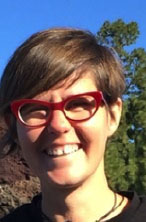 Suze Smith
Suze Smith
Power – Action – Flow [workshop]
An experiential movement exploration to turn your muscles on. Discover easeful action and flow through space. Feel your shape in space through the muscle connective tissue container. Feel the elasticity of your muscles that condense and expand, providing mobility and stability. Feel the interaction of muscles and bones, the dynamic system of suspension and power that levers your bones to propel you through space. Muscles work together, and there are a lot them. Muscles make up approximately 50% of your body weight. If they work against each other there is no movement. Consider the small muscles in the palm of your hands that support reaching; muscles of the face, creating expression and activating the sense organs; muscles of respiration between your ribs that support breath; muscles that connect ribs to pelvis and pelvis to spine, bridging top and bottom halves of the body; the long muscles that connect your hips to your legs that support locomotion, moving you from place to place; the layers of muscles in your feet, setting the tone for verticality. Experience your own capacity for action, gentle power, and structural integrity through the muscles system.
Bio: Suze Smith
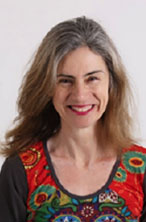 Zsuzsi Soboslay
Zsuzsi Soboslay
Thawing the ‘frozen’ subject: working with tenderness and clarity around trauma [workshop]
This participatory workshop demonstrates an approach to working with tenderness and clarity around trauma, with an emphasis on appealing to systemic support systems via a multi-sensory approach.
In creating participatory process with people who have experienced trauma, I do not focus on a trauma narrative. However, if trauma is present, it needs to be held—if you like, the ‘silent partner’ in a process.
Working with human potential embraces embodied complexities, which include both trauma and joy. For traumatised individuals, even joy can be problematic: learning to reincorporate joy can be a major part of restoring systemic resilience.
This workshop uses multi-sensory modalities and mind-body processes.
In the session, I will refer to the work of psychologist Stephen Porges; biologist Charles Birch; Spinoza’s concept of ‘joy’; the sensory development work of Entelechy.org [Deptford, UK] in nursing homes and with people with profound and complex needs, and my own BodyEcology practice.
Bio: Zsuzsi Soboslay
 Jan Stevenson
Jan Stevenson
From Couch to Floor: A psychiatrist’s inclusion of body movement and somatic practices in therapy [presentation]
Jan’s personal journey from an ‘on the couch’ psychiatrist to develop a more somatically oriented approach with her patients, by leading them into body awareness and movement, is described in her presentation. In her personal journey to find the meaning of embodiment she undertook many related body movement trainings and a wide range of personal pursuits as described in her bio. She goes on to expand on what it has meant to her to find the meaning of embodiment and how this has altered her professional practice and the way that she interacts with her patients. She describes this difference and how now being more embodied herself has changed her interactions and resonance with her patients. She illustrates this with an example of how her new focus on body and movement is used in the consulting room and involves the participants in some experientially movement based activities that she uses – now very much a part of her ‘…to floor’ professional approach.
Bio: Jan Stevenson
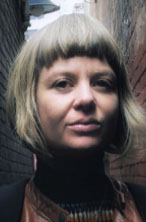 Gretel Taylor
Gretel Taylor
Embodying extreme weather: How might site-specific somatic practices offer insights in an era of climate change?
Using Body Weather as a lead example and drawing more broadly on dance and performance practices in relation to environments/sites/places, this paper will discuss how such practices might offer insights at this crucial and precarious time.
Jane Bennett suggests that the conceptualization of matter as inanimate may be impeding the emergence of ecological and more materially sustainable modes of production and consumption. She therefore advocates ‘more intelligent and sustainable engagements with vibrant matter and lively things’ (2010). Site-specific dance and performance practices might aim to facilitate such ‘lively engagements’ through performance.
The paper will unpack the complexity of ‘just being there’ in site-based performance from the embodied perspective of both performer and audience. Taking audiences to a site where performers activate their senses in various ways, can bring audiences to an increased appreciation of the place’s ecological (and cultural, political, historical, etc.) layers. Just being present, in a place, paying attention, gives audience members an opportunity to have subjective, personal experiences of that place, which are rare for many people in today’s world. Links from the close-range relationship of an audience member to the specific site of performance, to the meta ‘site’ of human relationships to global ecosystems in dramatic change may seem a leap, but as Bennett and others have suggested, these kinds of engagements may be key to a reconceptualization of matter.
The paper postulates that performative activation of places and (re-)sensitising of audience/ participants to their surrounding environments can decenter the role of performer, which could conceptually extrapolate to repositioning the human in relation to the environment. It also acknowledges the particularity of place/site-based performance work in the Australian postcolonial context, which is already a dense and uncanny space to embody, further complicated by the instability of place precipitated by climate change.
Bio: Gretel Taylor
 Sarah Winter and Jo Woods
Sarah Winter and Jo Woods
Gender Bender – An Exploration of Embodied Gender
[Artful Awareness workshop]
Gender identity is defined by the Human Rights Commission? as the “innermost concept of self as male, female, a blend of both, or neither – how individuals perceive themselves and what they call themselves.”
Society often expects people to look and behave a certain way, depending on their biological sex. Men are usually expected to act and look ‘masculine’, and women, ‘feminine’. However, we all express masculinity and femininity in different ways, and we all relate to elements of masculinity or femininity differently.
As movers, we ask the question: What is it like to embody gender stereotypes, and then to find our own unique expression? After all, there are dozens of genders, outside of just man or just woman, that 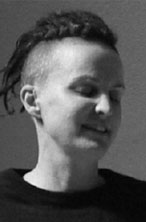 people can identify with. During this session, participants will be guided in an embodied exploration and expression of what gender means or doesn’t mean for each of us.
people can identify with. During this session, participants will be guided in an embodied exploration and expression of what gender means or doesn’t mean for each of us.
Using Open Floor movement principles, an enlivening musical score, and props, we will explore the fringes of gender and gender norms. Physical props like flowing skirts are just one way we can explore an expanded movement repertoire. By allowing the fabric to become an extension of our body we can invite ourselves to move in new and exciting ways.
This session will be a just small taste of the ongoing work that Jo Woods and Sarah Winter offer through their ‘Gender Bender’ classes/workshops. This work is suitable for every body, of every type, of every age and would interest anyone who has questioned the traditional Feminine and Masculine binary stereotypes. It is not a workshop about sexuality, rather and embodied exploration of gender norms, and not norms.
Sarah and Jo are passionate about using Movement as Medicine and working with diverse populations. Not only do they believe in the healing power of the arts but they believe in anchoring that knowing with integrative practices that help to build more robust pathways to becoming fuller, more alive, emotionally intelligent human beings.
Artful Awareness – artfulawareness.com.au; sarah@artfulawareness.com.au
Bio: Sarah Winter
Bio: Jo Woods
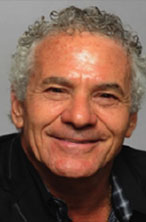 Gary Wohlman
Gary Wohlman
The Art of Embodying Affirmations [presentation]
In this engaging, interactive and dynamic session, Dr Gary Wohlman, the creator of The Wohlman Method for the Whole Person, will demonstrate how to swiftly and powerfully encode renewing self-talk in the muscle memory by speaking, whispering and singing affirmations in rhyme, like Dr Seuss, while stretching the corresponding muscles at the same time. In Karaoke style, Dr Gary will lead all attendees to vocalise and embody these rhyming affirmations while integrating breath, sound, movement, and visualisation – thereby stretching the bodies and the minds of all those present.
In these sessions, Dr Gary whimsically transports people on an inner journey through their self-talk, swiftly transforming people’s relationships to their bodies, partners, communication, creativity and contribution to humanity. It’s powerful and magical work.
See: garywohlman.com
And youtu.be/KvhRO3JA5bY
Bio: Gary Wohlman
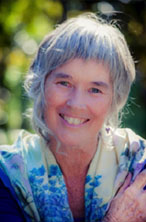 Virginia Woods
Virginia Woods
The brain and the moving body in psychotherapy [presentation]
As a psychologist and a dancemovement therapist my psychotherapy work has focussed on accessing the wisdom of the body to change the mind and habitual responses that cause distress. Somatic psychotherapy research and therapy processes offer methodologies to holistically access the nervous system through the body, and offer relief, and new ways of responding to the world and relationships.
This presentation addresses how dancemovement therapy enhances somatic psychotherapy methods/processes in a clinical setting. The understanding of the body-mind connection, posture, gesture, body awareness, movement patterns and use of rhythm, supports the processing of trauma and shift in developmental patterns.
Case studies from my psychology practice will be presented showing how dancemovement therapy processes support somatic psychotherapy methods, with a discussion on the latest neuroscience that supports both somatic psychotherapy and dancemovement therapy processes.
Mindfulness and the Body [workshop]
How much are you really aware of your Body? When you are guided by yoga or dance teachers to ‘listen to your body’, or by therapists to say: ‘how do you sense that in your body’, do you sense what that means in your Body or are you using your mind to decide?
Our mind is tricky and can lead us down habitual paths of responding. The body never lies, we can follow the Body’s way to know more deeply what we need. Learning to be aware of the Body, to truly listen to the response of the Body will guide us to greater ease, strength, and support. Inviting embodiment of our experience is to guide us to essentially what is needed for relaxation or action or release.
In this workshop you will be guided to explore bringing awareness to the Body’s wisdom and playing with moving from that awareness to maintain comfort, ease, and stability, authentic expression, confidence and joy.
My rationale is that it also offers me a large vocabulary of tools and knowledge from which to employ somatic methods. Body awareness, knowledge of the body and confidence in the information perceived through the body, greatly enhances somatic psychotherapy work. I believe offering therapists a conscious experience of their own and others’ ability to move from the body’s direction will enhance their ability to lead others somatically.
